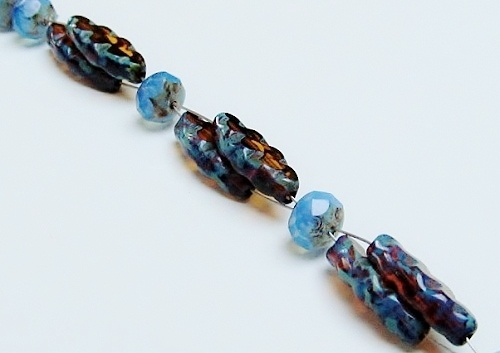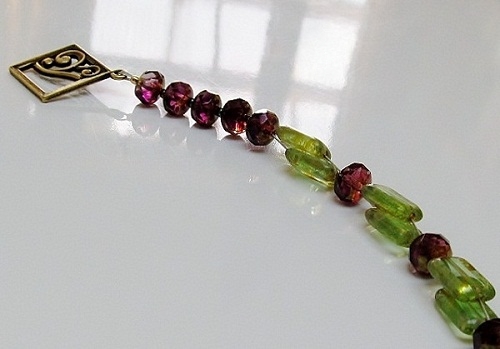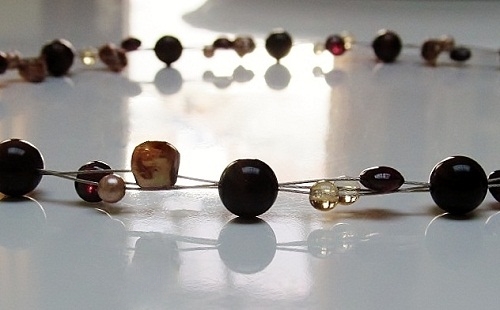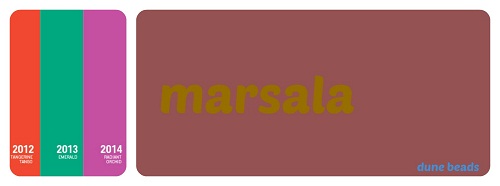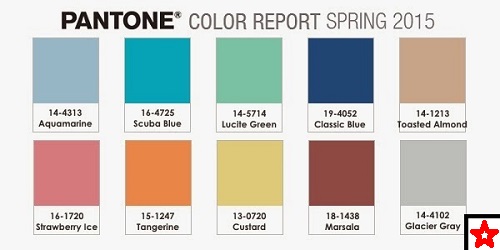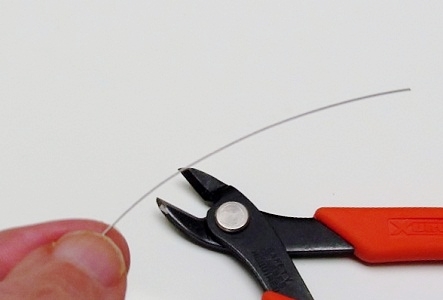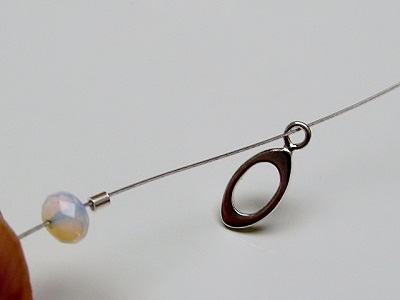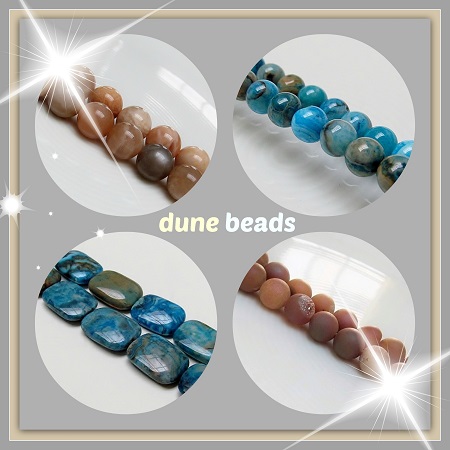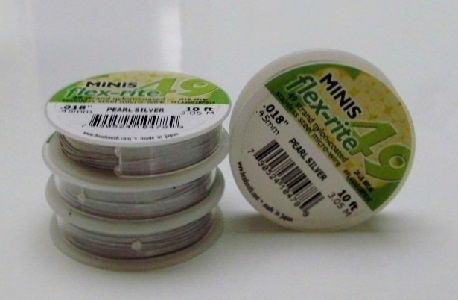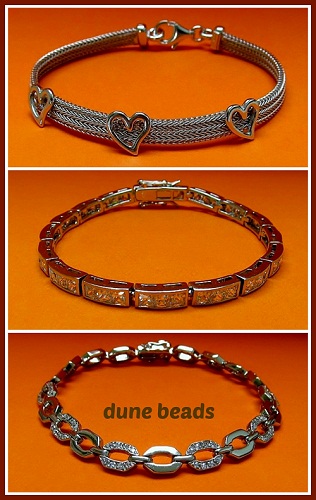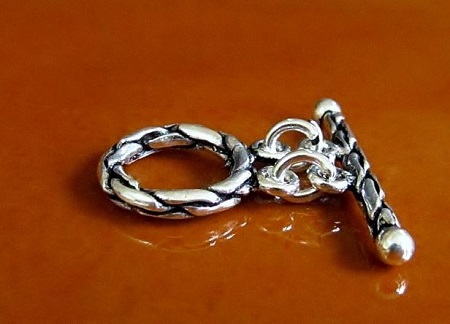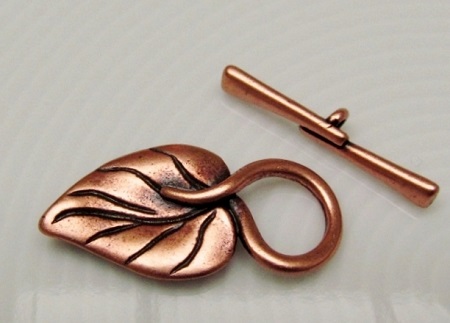You have already made a couple of single strand necklaces and thus are comfortable with attaching a clasp. With just a little extra element you will already be able to make a multi-strand gradient necklace. A gradient necklace fits as well with clothing with a high neckline as with strapless and therefore can be worn both in summer and in winter.
A not overlapping or gradient multi-strand design:
You have the choice between strands that overlap or strands that do not. By overlapping strands all the strands have exactly the same length. When not overlapping each strand is always slightly longer than the previous one and thus forms a cascade. Depending the size of the beads, some mathematical calculations may be required.
.jpg)
To attach three or more strands to a clasp, you may insert the following element between the strands and the clasp:
- either a 5mm jump ring
- advantage: easy to realize – disadvantage: you will lose some length when attaching as you fasten the strands one next to the other
- or a jump ring and a multi-strand end bar such as our tube-shaped one with 3 rings, 9x13 mm
- advantage: this method respects the calculated distances – disadvantage: you should pay extra attention to the order when attaching the wires
.jpg)
The hardest part with non-overlapping multi-strands is:
- not to distort the jump ring
- the consistency between the strands: each strand has to be somewhat longer, and this difference should be distributed evenly over the strand.
Calculating of the length of the different strands of a cascade necklace:
- for smaller beads, the difference between each strand should amount to 2,5 cm, for mid-sized beads it will be 3,1 cm and for big beads that will become 3,75 cm
- with extra large beads you will need even more space (sometimes even up to 6 cm), while with 3 mm beads on the other hand you foresee less space (2,2 cm)
- if you use both small and large beads, always keep into account the size of the largest bead you will use to determine the distance between the strands
- example, with medium-sided beads: if strand 1 = 40 cm - than strand 2 = 43,1 cm - and strand 3 = 46,2 cm
Advice:
- integrate rondelle beads or spacers in your design so that it is easier to create the calculated length
- lay out a unit of your design, measure it and evaluate if it will permit you to get the required length
- if your design ends in a big bead, add some seed beads
.jpg)
SEE - part 2




.jpg)
.jpg)



